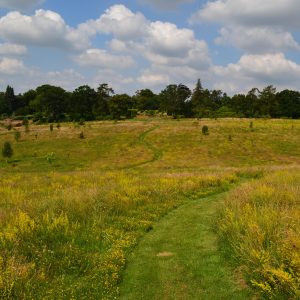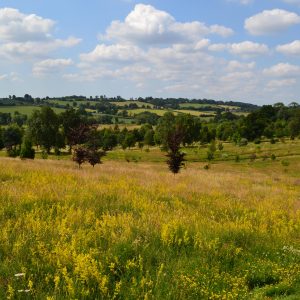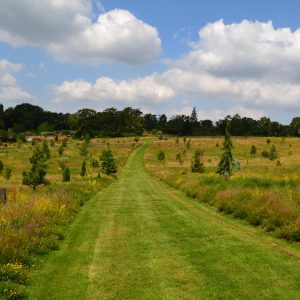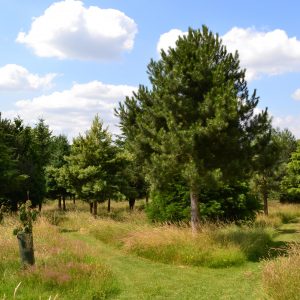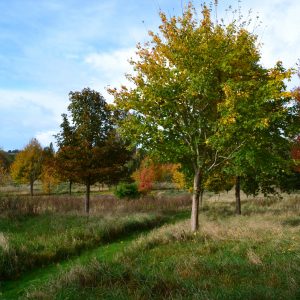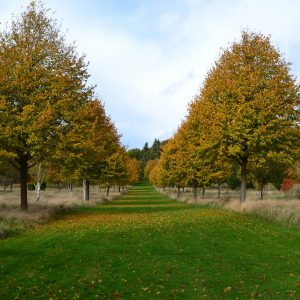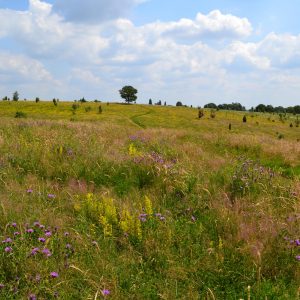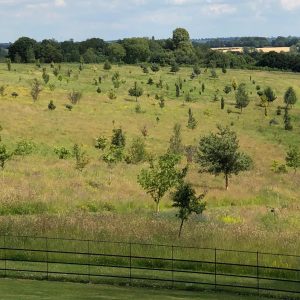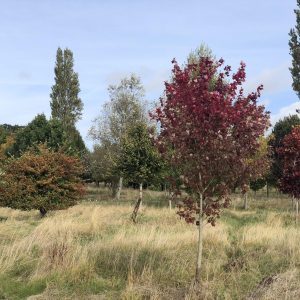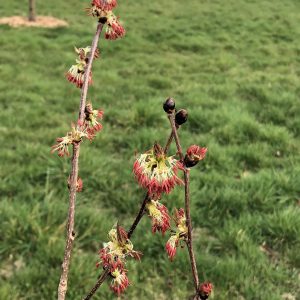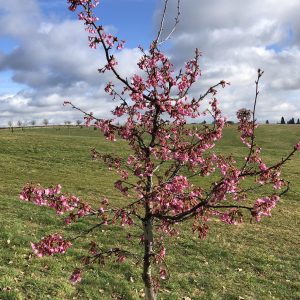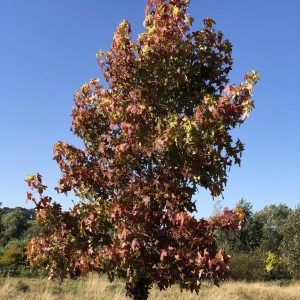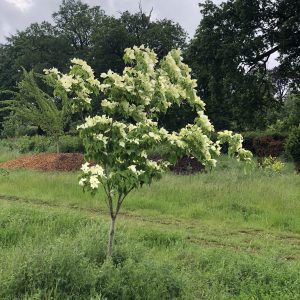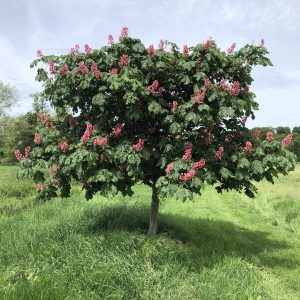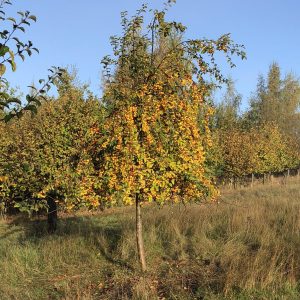
At 80 acres, the arboretum at Broughton Grange is one of the largest such recent plantings in the UK. It is sited to the east of the gardens with fine views over a classic Oxfordshire valley and itself offers attractive vistas from various parts of the garden. Planting of the arboretum began in 2003 on the southerly part of the site. The original centrepiece is a long avenue of small-leaved lime (Tilia cordata ‘Greenspire’) that leads to a natural copper beech (Fagus sylvatica Atropurpurea Group) ‘curtain backdrop’ with dawn redwood (Metasequoia glyptostroboides) ‘actors’. Additionally, there is a pinetum featuring a variety of evergreen and deciduous coniferous trees. The main access point for this part of the arboretum is the Mediterranean terrace, from which both the small-leaved lime and horse chestnut axis avenues can be viewed. Fine specimens of broad-leaved kindling bark (Eucalyptus dalrympleana), Italian cypress (Cupressus sempervirens) and stone pine (Pinus pinea) punctuate the terrace.
The more recently planted area covers around 50 acres and stretches eastward from the main gardens over the brow of the opposite hill. Establishment began in 2007, when wildflower seed was sown into the area. The seed mix contained species such as the prominent white ox-eye daisy (Leucanthemum vulgare), yellow bird’s-foot trefoil (Lotus corniculatus) and knapweed (Centaurea nigra). The arboretum may be accessed from the walled garden area, at the western end of the wide central wildflower vista. From this access point there is a great view to the east across the vista of wildflowers, which leads the eye toward a group of mature wellingtonia (Sequoiadendron giganteum) in the distance.
A total of around 2000 specimens have been planted in the arboretum to date (spring 2019). To aid establishment, hand irrigation is carried out during the first two years after planting, using a hose and mobile tank. The trees are mapped using GPS (global positioning system) technology, enabling access to information relating to any particular specimen and its location. Varieties valued for their autumn colour have generally been planted on the eastern side of the arboretum, whereas those known for spring interest are more concentrated on the western side, nearer the main gardens.
Trees are sourced from specialist nursery suppliers at a young age. They are subsequently grown for at least two years here on site prior to planting in order to gain height and improve strength.

